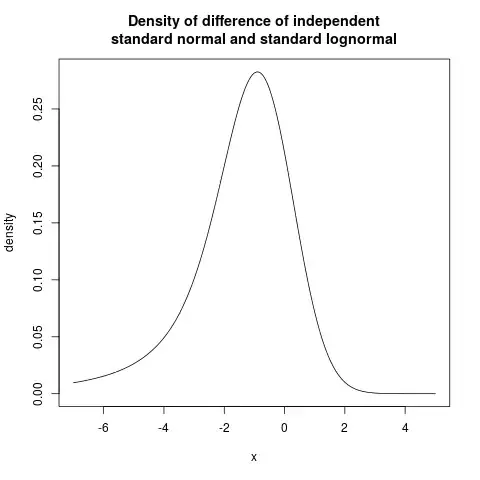I have to study tolerance intervals for a distribution of a random variable Z that is given by the difference of a normal X minus a (independent) lognormal Y.
To begin with I tried to get an expression for the PDF of Z, but I got stuck in solving the integral
$f_Z(z)=\int_{-\infty}^\infty f_X(x)f_Y(x-z)dx$.
where $f_X$ is the PDF of a normal random variable and $f_Y$ is the PDF of a lognormal RV independent from X. I don't even know if this integral is solvable in terms of elementary functions.
Is there any document I could read to progress in my analysis towards a tolerance interval? Do you believe this kind of distribution is tractable in a theoretical way?
